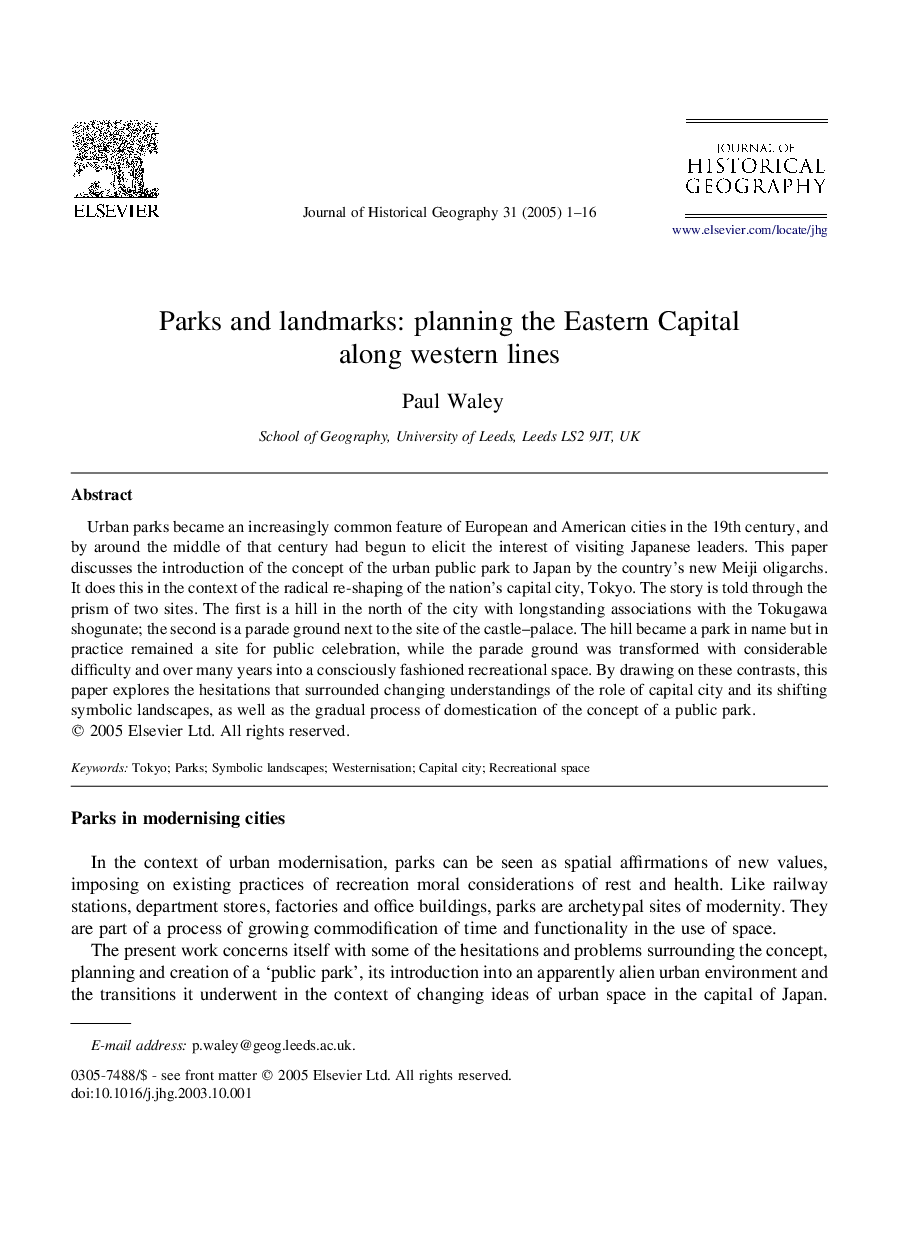| Article ID | Journal | Published Year | Pages | File Type |
|---|---|---|---|---|
| 10500495 | Journal of Historical Geography | 2005 | 16 Pages |
Abstract
Urban parks became an increasingly common feature of European and American cities in the 19th century, and by around the middle of that century had begun to elicit the interest of visiting Japanese leaders. This paper discusses the introduction of the concept of the urban public park to Japan by the country's new Meiji oligarchs. It does this in the context of the radical re-shaping of the nation's capital city, Tokyo. The story is told through the prism of two sites. The first is a hill in the north of the city with longstanding associations with the Tokugawa shogunate; the second is a parade ground next to the site of the castle-palace. The hill became a park in name but in practice remained a site for public celebration, while the parade ground was transformed with considerable difficulty and over many years into a consciously fashioned recreational space. By drawing on these contrasts, this paper explores the hesitations that surrounded changing understandings of the role of capital city and its shifting symbolic landscapes, as well as the gradual process of domestication of the concept of a public park.
Keywords
Related Topics
Social Sciences and Humanities
Arts and Humanities
History
Authors
Paul Waley,
